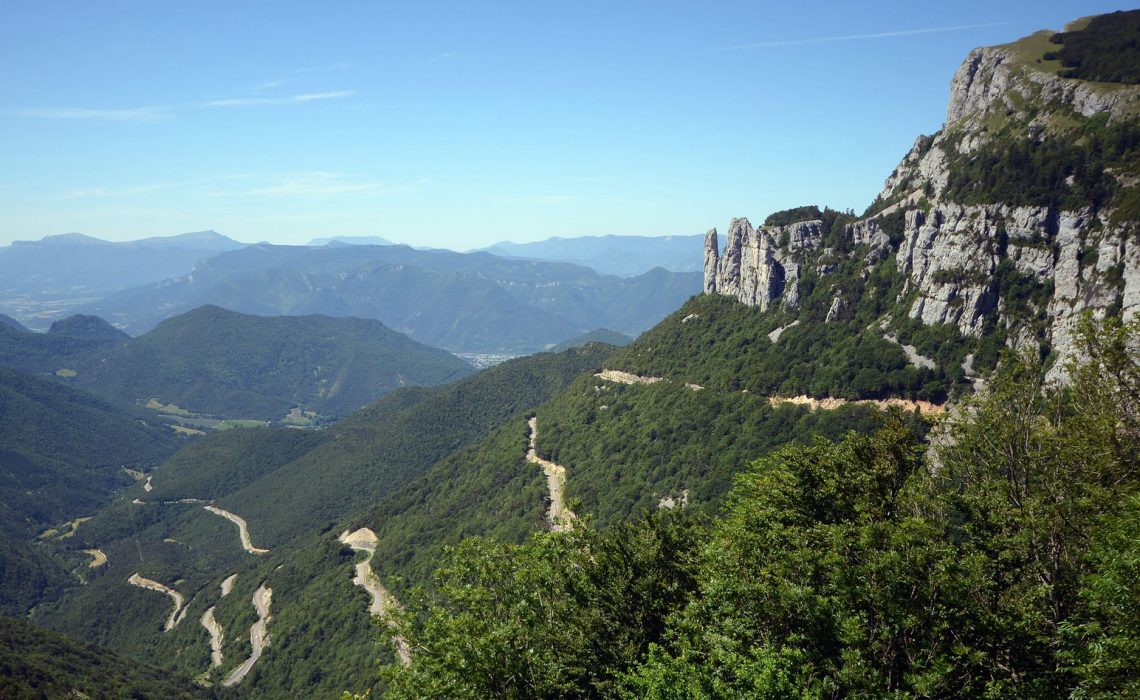
You might also like:
Iwanted gentler slopes and a serene alternative to the soaring, rugged landscape of the Alps. I found it in the Vercors Massif, less than an hour from Grenoble airport, where Ryanair’s new thrice-weekly summer route is opening up the region’s grassy pistes. But I also discovered a paradise for mountain biking, hiking and roller-skiing …
In a valley about a third of the way down the 60km-long massif between Valence and Grenoble, Villard-de-Lans, a small town of wooden chalets, has become the area’s activity hub. It has a twice-weekly food market, the only fishmonger in the region and, most importantly, many places to hire skis and bikes.
However, among the high-octane sports was something new to me: riding an electric mountain bike. While the presence of a giant battery on your bicycle frame can appear humiliating on the tarmac, it does at least mean you can genuinely go “mountain” biking in the Vercors.

Jean Lambret of the Vercors biathlon centre in nearby Corrençon-en-Vercors, says electric bikes have redefined the tourist landscape of the region. “People can go further and access areas that were not possible before; they extend the limits of the trip and now couples or families can do it together.” Max Harter, of local bike hire centre Altiplano, says 80% of its business is now in electric mountain bikes. “A typical scenario is a man comes in to buy an electric bike for his wife so she can keep up with him, and then a few weeks later, returns to buy one for himself so he can keep up with her!”

Keeping in mind Harter’s warning that “sometimes you have to brake going uphill on an electric bike”, I set off for a day in the woods and hills. Crossing the Pont de l’Amour, south-east of town, I rode along the shady Chemin des Traces and into the forest of pines and silver birches. The Vercors Massif is made up of valleys and plateaux and huge wooded expanses but feels very manageable on an e-bike bike.
Soon I met Renaud, a teacher from the local lycée, out for a run with his dog tied to his waist by a climbing rope. Martin Fourcade (two-time Olympic biathlon champion, a winter sport that combines cross-country skiing and rifle shooting) cycled past on a training ride, waving at hiking schoolchildren. The retired mayor leaned out of his tractor for a chat, just back from chopping trees. Everyone seemed so fit. I reached a plateau after a long, steep climb. I had to pedal, but I hadn’t touched my water and I could still speak in sentences.

Two hours in and I arrived at the glacière naturelle, a hoard of natural ice in the middle of the forest. It is formed by freezing air evaporating at the bottom of a cave (there are five public accessible caves in the region – the large subterranean karst system is still being explored) and was used to supply Grenoble’s hotels and bars in the 1920s.
I continue past the Auberge de Malaterre, a dark-wood, shack-restaurant with a witch effigy hanging from the rafters and passed some chamois, mouflons and overly friendly ibex and a herd of gingerbread-brown Villarde cows, recently reintroduced into the region. Last year, a stag came down the high street and walked into a bar on the main square.

Lunch was at Le Clariant, a solar-powered refuge restaurant in a forest clearing, built of logs by a lumberjack 60 years ago. Inside is a spectacular, beamed dining room, a reclaimed gothic fireplace and a glass-covered shaft that descends 20 metres into the earth and is lined with dangling sausages, curing in the damp air. “We light fires all around the glade with braseros [braziers] on the terrace and candle-fired raclettes in the restaurant,” says Dimitri Joly, who bought the chateau-sized cabin three years ago with some friends.
We had a duck confit tarte tatin with ginger and onion compote alongside a carrot and cumin flan (€21). Water is collected from the run-off and stored in tanks under the terrace. It hopes to open rooms next year so guests can spend the night in the regional nature park, either in the lodge or in glass-sided pods they call làs (as in je veux rester là – I want to stay there).

My ride ended at the biathlon training centre, where another Olympic medallist, Robin Duvillard, was practising on roller-skis around the 14km track. The two villages are full of healthy faces and Olympians, all summer training for their winter specialities, probably desperate to eat the local Bleu du Vercors cheese, mushroom ravioles, sausage and walnuts. Villard-de-Lans also has a skating rink, a bowling alley, stables, swimming pools, a trampoline centre and canyoning and white-water rafting nearby.
Sоurсе: theguardian.com



